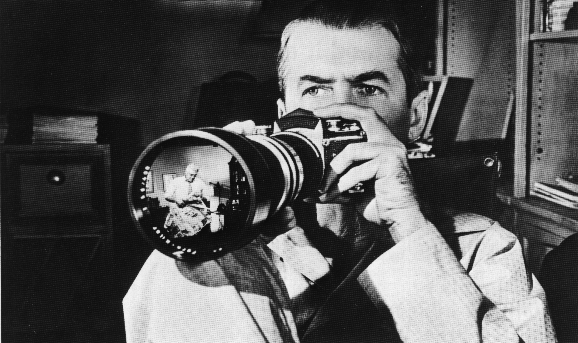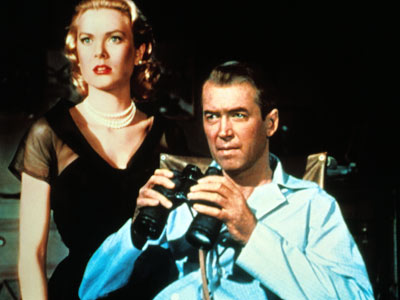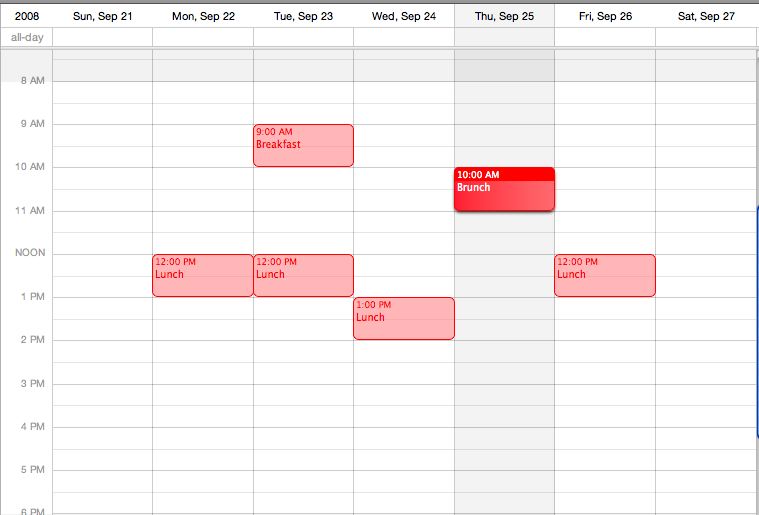Complete screenplay available at:
INT. JEFF'S APARTMENT - NIGHT - MEDIUM SHOT
Shooting over Jeff's shoulder we see beyond him the divan-
bed upon which Lisa is stretched out. There is one light
burning, behind Lisa's head. A fierce discussion is in
progress. Lisa gesticulates with her hands, body and legs.
LISA
There can't be that much difference
between people and the way they live!
We all eat, talk, drink, laugh, sleep,
wear clothes --
Jeff raises both his hands.
JEFF
Well now, look --
Lisa draws back one leg, and points a finger challengingly.
LISA
If you're saying all this just because
you don't want to tell me the truth,
because you're hiding something from
me, then maybe I can understand --
JEFF
There's nothing I'm hiding. It's
just that --
LISA
(Won't let him break
in)
It doesn't make sense to me. What's
so different about it here from over
there, or any place you go, that one
person couldn't live in both places
just as easily?
JEFF
Some people can. Now if you'll let
me explain --
LISA
(Ignores him)
What is it but traveling from one
place to another, taking pictures?
It's just like being a tourist on an
endless vacation.
JEFF
All right. That's your opinion. You're
entitled to it, but --
LISA
It's ridiculous for you to say that
it can only be done by a special,
private little group of anointed
people.
INT. JEFF'S APARTMENT - NIGHT - SEMI-CLOSEUP
Jeff begin to get desperate.
JEFF
I made a simple, but true statement
and I'll back it up, if you'll just
shut up for a minute!
INT. JEFF'S APARTMENT - NIGHT - MEDIUM SHOT
Lisa, stretched out on the divan. She looks at him for a
moment without speaking. Then:
LISA
If your opinion is as rude as your
manner, I'm not sure I want to hear
it.
We see Jeff's hand coming to the foreground with a restraining
gesture.
JEFF
(Soothing her)
Lisa, simmer down -- will you?
LISA
(Something starts her
up again)
You can't fit in here -- I can't fit
in there. According to you, people
should be born, live an die on the
same --
JEFF
(Loud, sharp)
Lisa! Shut up!
Lisa turns on her side, and stares into the room, angrily.
INT. JEFF'S APARTMENT - NIGHT - SEMI-CLOSEUP
After a moment of silence, Jeff says earnestly:
JEFF
Did you ever eat fish heads and rice?
LISA
Of course not.
JEFF
You might have to, if you went with
me. Ever try to keep warm in a C-54,
at fifteen thousand feet, at twenty
below zero?
INT. JEFF'S APARTMENT - NIGHT - SEMI-CLOSEUP
Lisa, still looking out into the room, and without turning,
says:
LISA
Oh, I do that all the time. Whenever
I have a few minutes after lunch.
JEFF
Ever get shot at, run over, sandbagged
at night because people got
unfavorable publicity from your
camera?
She doesn't answer, obviously annoyed at the unnecessary
questions.
JEFF
Those high heels would be a lot of
use in the jungle -- and those nylons
and six-ounce lingerie --
LISA
(Quickly)
Three.
JEFF
Well, they'd be very stylish in
Finland -- just before you froze to
death. Begin to get the idea?
She turns at last, and looks across at him.
LISA
If there's one thing I know, it's
how to wear the proper clothes.
INT. JEFF'S APARTMENT - NIGHT - MEDIUM SHOT
SHOOTING OVER LISA'S SHOULDER, and down her body, with Jeff
in the chair beyond. Jeff says, as if remembering some old
experience:
JEFF
Huh? Try and find a raincoat in
Brazil. Even when it isn't raining
(Squints at her)
Lisa, on this job you carry one
suitcase. Your home is the available
transportation. You sleep rarely,
bathe even less, and sometime the
food you even look at when they were
alive!
LISA
Jeff, you don't have to be
deliberately repulsive just to impress
me I'm wrong.
JEFF
If anything, I'm making it sound
good.
(A thoughtful pause)
Let's face it, Lisa... you aren't
made for that kind of a life. Few
people are.
INT. JEFF'S APARTMENT - NIGHT - CLOSEUP
Lisa realizes she is getting nowhere.
LISA
You're too stubborn to argue with.
INT. JEFF'S APARTMENT - NIGHT - CLOSEUP
Jeff, getting angry.
JEFF
I'm not stubborn! I'm truthful!
INT. JEFF'S APARTMENT - NIGHT - CLOSEUP
Lisa, with sarcasm.
LISA
I know. A lesser man would have told
me it was one long holiday -- and I
would have awakened to a rude
disillusionment.
INT. JEFF'S APARTMENT - NIGHT - CLOSEUP
Jeff is definitely angry.
JEFF
Now if you want to get vicious, I'd
be very happy to accommodate you!
INT. JEFF'S APARTMENT - NIGHT - CLOSEUP
Lisa starts to rise from the divan, THE CAMERA PANNING UP.
She moves away from THE CAMERA into the center of the room,
as she says:
LISA
(Wearily)
No. I don't particularly want that.
(She turns, faces him)
So that's it. You won't stay here --
I can't go with you.
INT. JEFF'S APARTMENT - NIGHT - CLOSEUP
Jeff looks across at her with some concern.
JEFF
It would be the wrong thing.
INT. JEFF'S APARTMENT - NIGHT - MEDIUM SHOT
Lisa, from Jeff's viewpoint.
LISA
You don't think either one of us
could ever change?
JEFF
Right now, it doesn't seem so.
Lisa begins to move around the room assembling her possessions
preparatory to leaving. She puts a comb, and other effects,
into a handbag. She gets her stole.
All this as she talks.
LISA
(Simply)
I'm in love with you. I don't care
what you do for a living. Somehow I
would just like to be part of it.
INT. JEFF'S APARTMENT - NIGHT - SEMI-CLOSEUP
Jeff starts to say something then thinks better of it, and
remains silent.
INT. JEFF'S APARTMENT - NIGHT - MEDIUM SHOT
Lisa pauses in the act of gathering her things together.
LISA
And it's deflating to find out that
the only way I can be part of it --
is to take out a subscription to
your magazine. I guess I'm not the
girl I thought I was.
JEFF
There's nothing wrong with you, Lisa.
You have the town in the palm of
your hand.
LISA
(Looks at Jeff)
Not quite -- it seems.
(Tosses a stole over
her shoulder)
Goodbye, Jeff.
INT. JEFF'S APARTMENT - NIGHT - CLOSEUP
JEFF
You mean "goodnight."
LISA
I mean what I said.
Jeff's eyes follow her up the steps toward the door. He calls
out to her, impulsively, as we HEAR the SOUND of the door
opening.
JEFF
Lisa!
INT. JEFF'S APARTMENT - NIGHT - SEMI-LONG SHOT
Lisa turns in the half-opened door.
JEFF
Can't we just sort of keep things
status quo?
LISA
Without any future?
INT. JEFF'S APARTMENT - NIGHT - SEMI LONG SHOT
Jeff tries to be pleasant, and offhand.
JEFF
Well -- when'll I see you again?
INT. JEFF'S APARTMENT - NIGHT - CLOSEUP
Lisa, standing in the open doorway.
LISA
Not for a long time. Not, at least
until --
(She begins smiling)
-- tomorrow night.
Continues smiling as she close the door softly behind her.
INT. JEFF'S APARTMENT - NIGHT - CLOSEUP
The pleasantness on Jeff's face slowly melts into baffled
discouragement. He reaches for a nearby phone picks up the
receiver, dials. It buzzes on filter.
Receiver up on filter.
GUNNISON
(Filter)
Hello.
JEFF
Gunnison?
GUNNISON
Yeah. Is that you, Jeff?
JEFF
It's me.
GUNNISON
Something wrong?
JEFF
The word is "everything." Now what
time does my plane leave Tuesday?
GUNNISON
(Unhappy)
Jeff --
JEFF
(Won't give him time
to argue)
I don't care where it goes -- just
as long as I'm on it.
GUNNISON
(Wearily, after pause)
Okay. Indo-China. Tuesday. We'll
pick you up.
JEFF
That's more like it. Goodnight, old
buddy.
GUNNISON
Yeah.
Jeff hangs up, looks up to the door through which Lisa left.
He's not particularly happy.
INT. JEFF'S APARTMENT - NIGHT - SEMI-CLOSEUP
Jeff returns to the window. He lights a cigarette and smokes
it peacefully, as he contemplates the neighborhood.
EXT. NEIGHBORHOOD - NIGHT - SEMI-LONG SHOT
The CAMERA slowly sweeps over the various apartments with an
odd window lit here and there. In the distant street there
is still some traffic passing, with one or two pedestrians
going by. THE CAMERA completes its sweep, and starts to move
back again. Somewhere a dog howls. The PANNING CAMERA comes
to a sudden halt.
INT. JEFF'S APARTMENT - NIGHT - CLOSEUP
Jeff smiles a little, but as the howl continues, his
expressions sobers. His eyes begin to scan the neighborhood,
as if looking for the source. He fails to find it, and sits
there, puzzled and disturbed. The scene, and the sound of
the dog:




